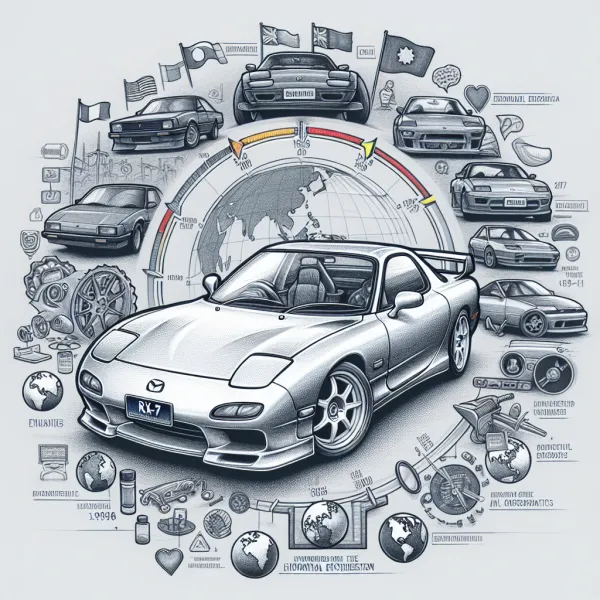The Iconic Mazda RX-7: A Legend in Automotive History
The Iconic Mazda RX-7: A Legend in Automotive History
The Mazda RX-7 is more than just a car; it’s a symbol of innovation, performance, and timeless design. First introduced in 1978, the RX-7 quickly became a favorite among car enthusiasts, thanks to its sleek styling, lightweight design, and revolutionary rotary engine. Over the years, the RX-7 has cemented its place as one of the most beloved sports cars in automotive history.
A Revolutionary Beginning
When Mazda unveiled the RX-7, it was clear that this car was something special. At its core was the Wankel rotary engine, a compact and lightweight powerplant that set the RX-7 apart from its competitors. Unlike traditional piston engines, the rotary engine delivered smooth power delivery and high-revving performance, making the RX-7 a joy to drive.
“The RX-7 was a game-changer, offering a unique blend of performance, affordability, and innovation.”
The first-generation RX-7 (SA/FB) was a hit, with its 50:50 weight distribution and nimble handling earning it praise from drivers and critics alike. It was a car that could hold its own on the track while remaining practical enough for everyday use.
Evolution Through the Generations
The RX-7 evolved significantly over its three generations, each bringing new advancements and refinements:
- First Generation (SA/FB, 1978-1985): The original RX-7 featured a lightweight design and a 1.1L or 1.3L rotary engine. Its affordability and performance made it an instant classic.
- Second Generation (FC, 1986-1992): Inspired by the Porsche 944, the FC RX-7 introduced turbocharging, improved suspension, and a more refined interior. It was a car that appealed to both enthusiasts and luxury buyers.
- Third Generation (FD, 1992-2002): The FD RX-7 is often regarded as the pinnacle of the series. With its twin-turbocharged rotary engine, lightweight chassis, and stunning design, the FD became a legend in the sports car world.
A Legacy That Lives On
Although production of the RX-7 ended in 2002, its legacy lives on. The car remains a favorite among tuners, racers, and collectors, with its timeless design and unique rotary engine continuing to captivate enthusiasts. The RX-7 has also left its mark on pop culture, appearing in movies, video games, and motorsports events around the world.
Today, the RX-7 is celebrated as one of Mazda’s greatest achievements. Its influence can be seen in the design and engineering of modern Mazda vehicles, including the RX-8 and the MX-5 Miata. For many, the RX-7 represents the perfect blend of innovation, performance, and passion.
Conclusion
The Mazda RX-7 is more than just a car; it’s a piece of automotive history. From its revolutionary rotary engine to its stunning design, the RX-7 has earned its place as one of the most iconic sports cars of all time. Whether you’re a lifelong fan or a newcomer to the world of rotary engines, the RX-7 is a car that continues to inspire and excite.
